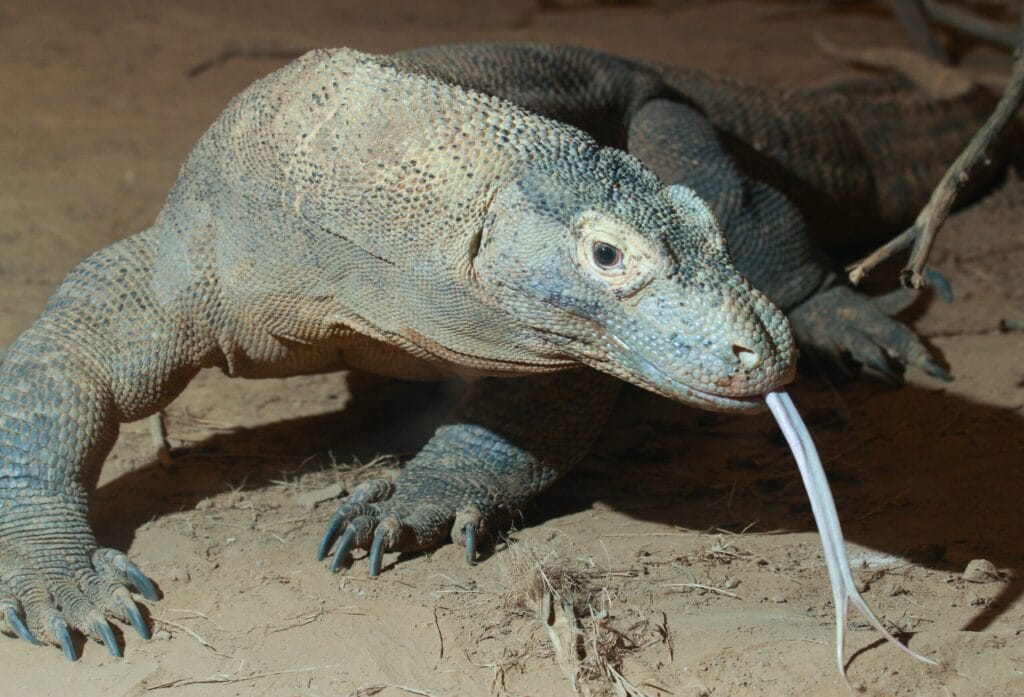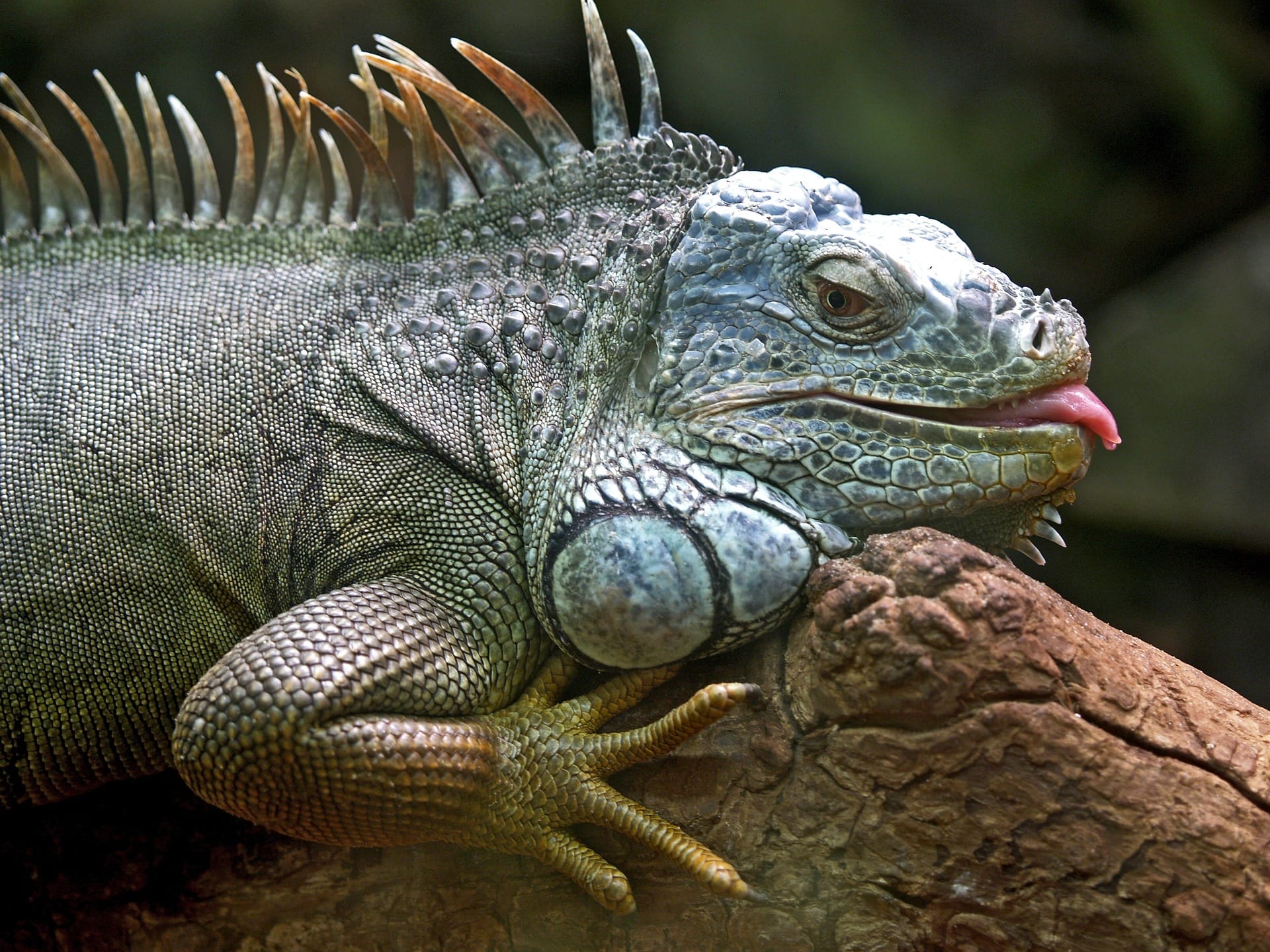Users of social networks say that the iguana’s venom allegedly acts extremely slowly, so after a bite the reptile follows its victim for a long time until it dies. We decided to check whether similar behavior is typical for these lizards.
On the web popular Here's the story: “I was given an iguana for my birthday. I was happy, played with her, fed her, and then she grabbed my finger. I was offended by her, then I looked: and she looked at me so devotedly and sadly, followed me around the house, looked into my eyes: “I’m sorry, master.” In the morning I wake up, and the iguana is sitting next to me, looking sad. Well, I got really emotional. But my hand is swollen. So I grab the iguana and go to the doctor. There it turned out that this type of iguana is poisonous, only their poison is very weak, so they first bite, and then stupidly drag around the victim, waiting until it dies...”
Among others, this story was shared on my website and in "LiveJournal» journalist Vladimir Shakhidzhanyan, she has been maintaining for many years popularity V blogs, on forums, V social networks, on entertainment platforms and is found even in magazine about art in an article about one of Caravaggio’s paintings.
Iguanas are lizards that live primarily in Central and South America. Adult reptiles can achieve 1.5–2 m in length and weigh up to 14 kg. Iguanas lead diurnal, live mainly in trees and rarely descend - only for the sake of mating, laying eggs or in search of a more suitable tree.
Iguanas eat leaves, flowers and fruits, that is, they are herbivores. In 1990, a team of scientists led by herpetologist Stanley Rand from the Smithsonian Institution researched gastrointestinal tract contents of 31 iguanas captured in Panama. The sharp teeth of reptiles cut off large pieces of leaves and flowers, and digestion in their stomach is not very active, so food fragments can be analyzed simply by comparing them with a herbarium. All stomachs contained exclusively plant material - leaves of trees and bushes, fragments of vines and herbs. Scientists allowthat insects can sometimes be found in the stomach of an iguana, but only because, biting off and instantly swallowing leaves, the animal does not pay attention to them. Researchers suggest that iguanas may also ingest sand and gravel to aid digestion.
There is no evidence that these reptiles feed on meat, bird eggs or carrion. Moreover, the digestive system of iguanas does not have enough enzymes to break down animal proteins and fats. A captive individual experiencing food shortages can, in theory, eat insects and even mice offered by the owner, but only until the nutritional deficiency disappears, that is, until it is offered a sufficient portion of tasty and healthy foliage. However, the iguana will most likely prefer to eat its own feces, which, although they do not have significant energy value, at least do not contradict its diet. The fact is that animal food causes serious harm to the reptile’s body - those amino acids and purines that the lizard cannot digest break down into uric acid molecules. It is deposited in soft tissues, organs and joints, causing urolithiasis, as well as causing pain with every movement, similar to that experienced by a person suffering from gout.
It turns out that, contrary to what is stated in the story from social networks, under normal conditions of being kept in captivity, there is no point in an iguana getting animal protein for itself, especially by attacking a person. This fact alone makes the story described implausible.
Venom of only two species of lizards dangerous for humans: Arizona girdler and Mexican beaded lizard. The poison glands of iguanas are almost atrophied in the process of evolution and produce a low-toxic poison that poses no danger to humans or other animals. However, the iguana's bite should not be underestimated - in its jaw located about 120 small and fairly sharp teeth, and new ones can grow in place of the fallen ones. Therefore, when biting, an iguana will not only damage the skin and blood vessels, but can easily leave a dozen of its teeth in the wound.
Oral hygiene in lizards leaves much to be desired. In her mouth located many bacteria - for example, salmonella or gram-negative Serratia marcescens, resistant to common antibiotics. An iguana bite requires immediate medical attention and, most likely, proper antibiotic therapy. Therefore, the part of the story related to the hand swelling after a bite and going to the doctor looks generally plausible.

Probably the story about the iguana was born from a common stereotype about Komodo dragons. For a long time was considered (including in scientific environment) that these reptiles accumulate cadaveric poison and pathogenic bacteria in the oral cavity, with the help of which they poison their victims, and then follow them, waiting for their death from sepsis.
Komodo dragons are the most large lizards (length reaches 3 m, and weight - 135 kg). They, unlike iguanas, predators, hunt wild boar, deer, buffalo, horses and cattle. Young individuals can feed on rodents, bird eggs, insects, snakes, other lizards, fish, and crabs. Also, monitor lizards do not disdain carrion, and when food resources are limited, they resort to cannibalism. At one time, an adult monitor lizard can eat meat weighing up to 80% of its weight. In the lower jaw of these reptiles there are poisonous glands, the toxin from which has an anticoagulant effect, that is, it causes massive bleeding in victims.
The teeth of Komodo dragons have special grooves and cavities; meat gets stuck in them and creates a favorable environment in the mouth for the development of pathogenic bacteria. At the same time, the monitor lizard itself does not suffer from this - in the plasma of its blood contained unique antibacterial peptide DRGN-1. Its laboratory-synthesized analogue is effective against antibiotic-resistant strains of Pseudomonas aeruginosa and methicillin-resistant Staphylococcus aureus, including in the case of biofilm formation. Scientists suggestthat it will be possible to obtain the antibiotic of the future from the blood plasma of the Komodo dragon.

However, poisoning its victims is not the main hunting strategy of the Komodo dragon. American biologist Walter Auffenberg spent more than a year observing these reptiles, and in his book notes, that I have never seen a Komodo dragon bite a victim, inject it with poison, and then let it go to die. Strong jaws and sharp teeth allow the animal not to use this tactic - the monitor lizard either sharply shakes the victim held in its mouth until it breaks its neck, or tears its Achilles tendons and disembowels the still living prey. The poison at the same time activates bleeding from lacerated wounds and simply allows you to kill the victim faster.
Thus, the story about the insidious poisonous iguana is an unsubstantiated urban legend. These lizards are herbivores that do not hunt other creatures. Even with meager feeding, an iguana will rather start eating its own feces than rushing at a person. Moreover, its venom is harmless to humans, but the bite itself is dangerous, but mainly due to the bacteria contained in the iguana’s oral cavity. It is possible that the legend was based on ideas about the hunting methods of the Komodo dragon, but they do not correspond to modern scientific data about these reptiles.
Cover image: by Brigitte Werner from Pixabay
If you find a spelling or grammatical error, please let us know by highlighting the error text and clicking Ctrl+Enter.






